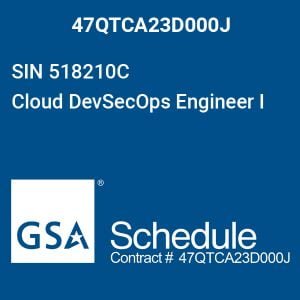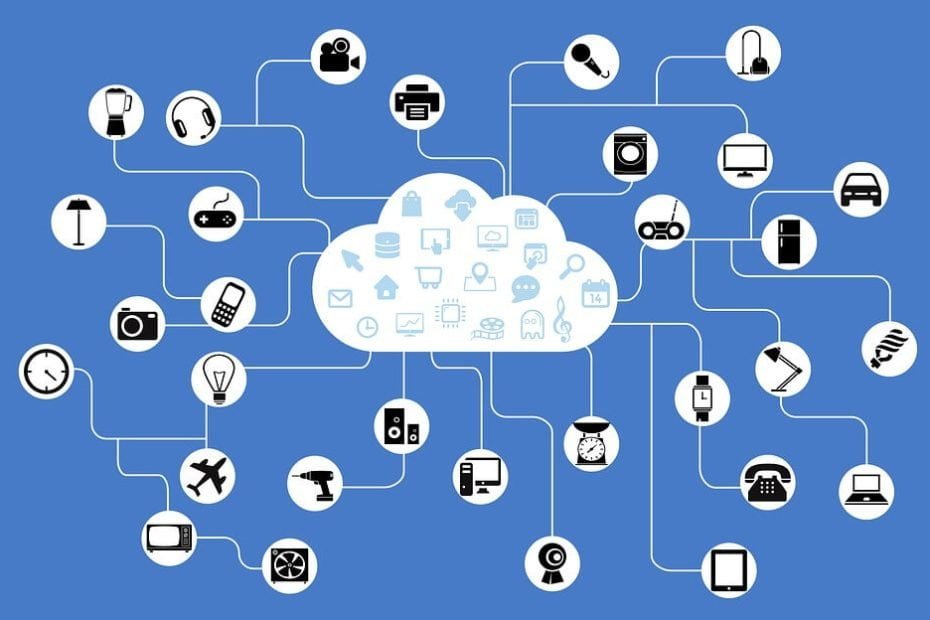The growth of the cloud has led many organizations to ask questions about how they can also become part of the cloud revolution. All cloud-native organizations started slowly and gained pace over a steady period of time. The initiation stage is of utmost importance here, as that stage defines the progress that companies make in that regard.
One of the biggest challenges that most organizations and experts have confessed to facing while making the transition to the cloud is the lack of expertise within the workforce. Your workforce needs to be updated with all of the latest methods in the cloud and should have sufficient expertise in dealing with the cloud. Additionally, your employees should know just how to handle the cloud and the requirements that come along with it once there is widespread implementation.
The employee onboarding process begins as soon as your preferred candidate accepts the offer letter that you give to them. The orientation further continues the employee onboarding process and includes tasks such as finalizing company paperwork to ensure that all job responsibilities are clarified to the new employee.
To put it in simple terms, onboarding is basically the process by which a candidate becomes a new hire and eventually progresses to become an engaged and valued employee.
In this article, we look at our guide for hiring the right kind of people for your cloud team. Your cloud success is based on your team members, and you should hire the right personnel without any bias.
Unlock the future of intelligent applications with our cutting-edge Generative AI integration services!
Best Practices for Employee Onboarding
Obviously, you would follow the best market practices for the onboarding process, such as:
Reflecting the Company Culture Honestly
It will suit you best to honestly reflect upon the organizational culture during the hiring process. You would want your new hires to know everything about the organizational culture in your firm. It is believed that most organizations lose 25 percent of their new cloud employees within the first year of hiring them, so the responsibility to ensure that the culture is communicated to them falls upon your shoulders.
Your organizations should embrace transparency, and the company culture should be communicated during the onboarding process. Your new hire should know everything there is about the way you do work within your organization.
Investing in a Paperless Onboarding System
Think back to your very first day on the job. Did you like filling out the tons of paperwork handed over to you? No one likes filling in papers on the first day of their job. You would obviously want to be able to make things easier for your new hires, which is why investing in a paperless onboarding system will signal due dividends for you in the time to come. Make the whole process easier for your HR team and your new employee to manage.
Partnering Veteran Employees with New Hires
The veteran employees at your organization have a lot of experience that they can pass over to the new employees. You can use the experience that they have within your organization and outside to benefit your new employees. You can pair up every new hire with one veteran employee to ensure that the onboarding process is simple for them.
Developing a Unique Welcome Process
You can use the benefits of technology to create a unique welcome process. As we mentioned above, the onboarding process begins right after the offer letter is handed over to your new cloud employee. Once the letter is handed over, you should grant email access to your new hire and send them an interactive map of your workplace.
The new hire shouldn’t feel uncomfortable when they visit the workplace on their first day. Additionally, give them an interactive brief of their job responsibilities and show them through your tech endeavors yet. Allow the candidate to be enthralled with all that they should expect on the first day at work. Make their work experience exciting, and create a unique welcome process.
How to Train Employees for the Cloud
Unfortunately, even after investing time and resources in their employees, most organizations see their efforts fall short of achieving their desired end goals. This is because organizations fail to provide their employees with the right amount of cloud knowledge.
The lack of proper cloud knowledge can be quite taxing, as employees don’t know how to handle cloud projects and end up underperforming.
The lack of proper employee training can lead to an undesirable state of affairs, contrary to what you would have expected from your cloud campaign. We now look at the phases of training your employees for the cloud and how to achieve the right progress forward.
-
 GSA HACS Principal Security Architect$153.15
GSA HACS Principal Security Architect$153.15 -
 GSA IT Consultant$81.12
GSA IT Consultant$81.12 -
 GSA Cloud DevSecOps Engineer I$71.79
GSA Cloud DevSecOps Engineer I$71.79
Educate Employees the Right Way
If done the right way, employee training can lead the wave toward the cloud revolution within a workplace. Managers must stay relevant and devise a strategy highlighting the importance of training employees on the job.
Rather than sending employees to different classes and training sessions, managers need to incorporate training within the employees’ daily routine and include it within the curriculum set for them. Each job role should have a different application of cloud training, depending on their expected responsibilities.
If you plan on working with a specific vendor, make sure that you don’t overlook the importance of vendor-specific training. Cloud adoption can become easier if you are working with a specific cloud provider.
You can also use this current wave of change to teach your employees about AI and ML and how both of them apply to their job roles. Build a culture of mutual learning, and make sure that your employees keep learning new and innovative skills.
Immediate Application
Such are the dynamics of our mind that we tend to forget what we have studied or learned from a course if there is no immediate application or repetition. Organizations need to understand this concept and give chances for immediate application after a training session.
It is believed that two weeks after a student attends a course, they will forget half of what was taught in it. Moreover, they will forget the remaining 50 percent within the next two weeks. This goes to prove that application is essential after you have imparted certain skills. Education is cemented through the authenticity of reinforcement, and reinforcement can perfectly be inculcated through the power of application in the workplace.
Organizations must know the different job roles their employees carry and how they can benefit from the training sessions being hosted. Once these training sessions are completed, the organization should ensure that the training is repeated by incorporating it into your employees’ daily responsibilities.
Growth Assignments
Even the best training program in the world cannot provide you with the ideal blend of everything required for any job. Developing skills in depth requires you to work beyond what was presented within the class. Your technical personnel should be taught how to embrace the technology around them by challenging themselves.
You should challenge your employees with growing assignments that require them to work beyond what they have become accustomed to. Challenging work in IT necessitates the introduction of newer assignments that make staff use their brain cells for advanced learning.
Just like a plant that has outgrown its pot cannot continue growing, your employees will be unable to deliver to their full potential if they aren’t given challenging assignments. Give regular challenging assignments to your workforce, and make sure that they are made to think of ways to improve the work they are doing. Allow them the space to think of innovative ideas and see them brew magic.
Soft Skills Employees Can Learn
It took some time for the change to happen, but organizations have finally realized that a college degree or years of experience aren’t enough to help someone succeed in today’s workplace. This realization took its time coming, but now that it is here, employers have started valuing the importance of soft skills in employees and are looking out for these characteristics in all potential candidates.
Soft skills are intangible, but they help you communicate and interact with the people around you. These skills help hone your skills and also help you impart your experience to the people near you.
Since these skills are hard to develop within the organization or through training, organizations are looking for individuals that come with these acquired soft skills.
Here we mention 5 soft skills that are applicable in any modern workplace.
Make Listening Your Secret Weapon for Communication
Good communicators are often associated with good public speaking skills. But, besides being able to articulate their thoughts well, there is another key factor for good communication – listening.
Listening is a skill that has lost its value over time but is regaining the lost prestige, slowly and gradually. Good listeners are in demand within organizations, as they are able to best follow up on the instructions given. Communication isn’t just about speaking proficiently, but it is also about listening to what the other person has to say and then giving them a share of your mind. Without focusing on what the other person said, you would never be able to achieve flawless two-way communication.
Accountability
Taking accountability for your actions is another soft skill that organizations desperately need nowadays. How common is it for employees in the modern workplace to shy away from their mistakes and place the blame on someone else? Accountability is an extremely important trait that teaches individuals to be responsible and it must be encouraged in the workplace.
Creative Thinking
Creative thinking is another aspect that organizations crave now. With a constraint of ideas, organizations need thinkers for novel idea generation. To propagate such ideas, organizations need to foster the right environment and give their thinkers food for thought at all times.
Emotional Awareness
Being aware of the emotional state of people near you is a trait that is quite far-fetched nowadays. Only a few people can display the type of emotional awareness and intelligence that is required by organizations nowadays.
Teamwork
Being empathetic towards your team and helping them progress is a skill that can not only help your personal development, but also that of the employees around you. Great things are never achieved alone, but only with the effort of the team as a whole.
All the soft skills we mentioned above can be developed by learning through your job and realizing the importance of teamwork, among many other attributes.
Building your own cloud team is no walk in the park. You will probably experience a number of challenges along the way, including hiring and onboarding troubles. This article will act as your guide through the process and give you the definite directions you need for success.
Further blogs within this Hiring the Right Kind of Employees for Your Cloud Team category.

